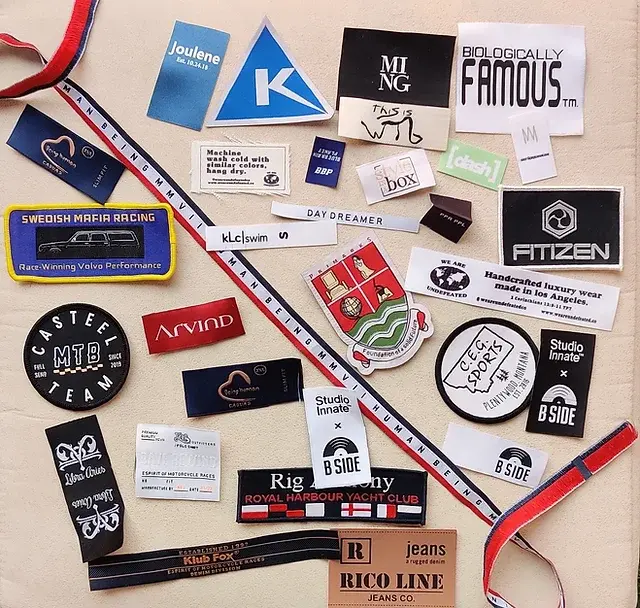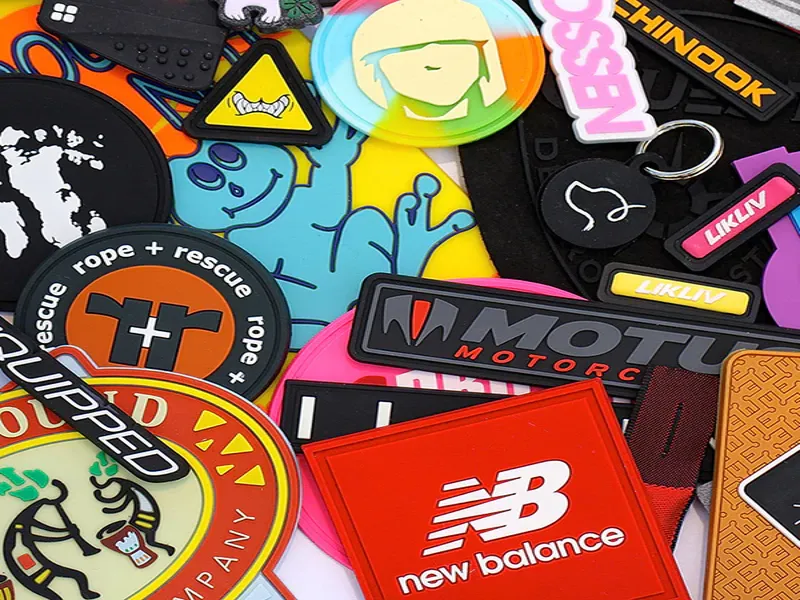A custom clothing label is integral to apparel, allowing wearers to protect themselves and care better for their garments. It also enhances brand image, boosts professionalism, and amplifies brand awareness for apparel companies. Whether you’re a seasoned designer or starting your clothing brand, you should know the common pitfalls while ordering woven labels for clothing products. It will help you not waste your investment and get a custom clothing label that improves your brand identity.
Here are the eleven most common mistakes you should not make while ordering customised clothing labels.
Top 11 Mistakes You Should Avoid While Ordering Custom Clothing Label
1. Not Including Enough Sewing Allowance To The Label
The logo on the centre of your label may move towards the corner after being sewn onto the garment. It will damage its overall appeal and no longer serve its purpose effectively. Therefore, you should always include enough space within your clothing tag to keep your design in place. Consequently, you should always test your sample by sewing it onto your apparel to determine the final results. For instance, leave a space of 25” around the design if you will stitch your label into the seam.
2. Usage Of Complex Typography
Many times, the typography you use within the digital art for your custom clothing label may not turn out as appealing as it seemed at first. You may have integrated some fancy typefaces within the design, but they’re no longer readable after production. Therefore, choose typography and its font to make your text both legible and appealing to the eyes. Use clear and large fonts for your tags to let the final product perform its purpose without interruption.
3. Presence Of Spelling Mistakes
Overlooking spelling mistakes in your custom clothing labels can have terrible consequences. It will impact not only the aesthetics of your product but also your brand’s credibility. A misspelt word can undermine your labels’ visual appeal and professionalism. Therefore, meticulous proofreading and scrutiny are required during the art approval phase. Take the time to double-check every word, ensuring that your labels communicate your brand message flawlessly.
4. Not Ordering Beforehand
Even the fastest custom clothing label manufacturers would struggle to meet your last-minute bulk orders. Placing your quote for urgently manufacturing custom clothing labels may burden your finances. You may have to pay extra fees and overnight shipping charges. The quality of your product may also get compromised during mass production within a strict deadline. In short, you got an idea that not ordering beforehand can cost you an arm and a leg. So always place your order at least two weeks before you would require it to get a high-quality product affordably.
5. Neglecting Poor Resolution Graphics
Graphics play a pivotal role in the visual allure of your custom clothing labels. Neglecting poor resolution can result in a final product that lacks clarity, which is essential for a professional appearance. To avoid this common pitfall, invest time in selecting high-resolution graphics during the design phase. Ensure that every element, from your logo to intricate details, maintains sharpness when translated onto the label.
6. Replicating Content That Is Already Available By Other Brands
Originality is crucial in establishing a distinctive brand identity. Replicating content already available from other brands undermines your uniqueness and negatively impacts your brand’s personality. Conduct thorough research before finalising your custom clothing label design to ensure it stands out. It should be a unique representation of your company’s values and aesthetics. Embrace creativity and innovation to craft a tag that fosters brand loyalty and recognition.
7. Picking Wrong Colors
The colours you choose for customised tags profoundly impact brand perception and recognition. Selecting the wrong colours may leave your customers with a bad impression of your brand identity. It’s crucial to understand colour psychology and its implications on consumer behaviour. By avoiding the pitfall of picking the wrong colours, you ensure that your product visually communicates your brand essence. As a result, you will develop a stronger connection with your audience.
8. Not Conducting Enough Research
Insufficient research before ordering customised fabric tags can result in missed opportunities. Understanding your target audience, industry trends, and the unique characteristics of your brand is crucial. Research the preferences of your customer base, analyse competitors’ tags, and stay updated on design trends within the fashion industry. It will help you to make correct decisions, ensuring your personalised tags align with market expectations and effectively resonate with your audience.
9. Integrating Too Many Details
While designing your clothing care labels, integrating too many details can overwhelm the visual appeal. Cluttered labels may not effectively communicate your brand message and can distract from key elements. Therefore, always prioritise simplicity and clarity in design, focusing on the most relevant information while placing an order. Balancing informativeness and visual appeal, you create a product that captivates and conveys your brand identity.
10. Not Paying Attention to Product Quality
While paying attention to creative and aesthetic considerations, overlooking the fundamental aspect of product quality can be damaging. The material, durability, and overall craftsmanship of your custom clothing labels contribute significantly to customer satisfaction and brand perception. Choose materials that align with your apparel’s intended use and longevity. Maintain robust quality assurance in the production process to ensure your tags’ durability.
11. Not Checking The Art Proof
Any reputable and professional custom clothing label supplier would always get your approval for the art before manufacturing your order. While they are in a digital art rendering process, they would share a blueprint of your design. It will showcase the label’s colour, size, artwork, and other aspects so that you can carefully check and gain clarity. Some companies would even send a sew-out sample to you to get your acceptance of the overall appeal and quality.
Many individuals do not vigilantly check provided digital or physical samples. They ignore the design details and regret once they get the final delivery of their product. Hence, always check the dimensions, design, and other information within the sample before approving it to save yourself from future regrets.
Final Words
As we wrap up this blog, keep in mind that attention to detail can transform a good label into an exceptional one. By being mindful of spelling mistakes, graphic oversights, and other common pitfalls, you’ll get labels that clearly represent your brand and leave a lasting impression. Take the lessons learned here to heart, conduct thorough research, prioritise simplicity, and place orders well in advance. In doing so, you’ll get perfectly customised tags that boost your brand identity.








